Category Archives: Trees
Juniper Trees and Shrubs: Types, Leaves, Berries (With Pictures) – Identification Guide

Juniper trees and shrubs are a group of evergreen conifers with needle-like leaves that have a pine scent and dark-blue berry-like aromatic fleshy cones. Species of juniper trees vary in shape and they grow between 66 and 103 ft. (20 – 40 m) tall. However, junipers can also grow as low-growing, spreading shrubs growing as little as 1 ft. (0.3 m) or as tall as 5 or 6 ft. (1.5 – 1.8 m). Junipers also grow in many climates and can withstand freezing temperatures.
Plumeria Tree: Flower, Fertilizer, Cutting Propagation and Care Guide

Plumeria is a group of small deciduous trees or shrubs and is famous for highly scented, exotic, showy flowers. Associated with the Pacific islands such as Hawaii, plumeria flowers are shaped like a star and come in shades of white, yellow, pink, red, and multi-colors. Plumeria trees are also known for their large, leathery leaves that decorate the attractive ornamental tree from spring until fall.
Chokecherry Tree: Leaves, Chokecherries, Flowers (With Pictures) – Identification
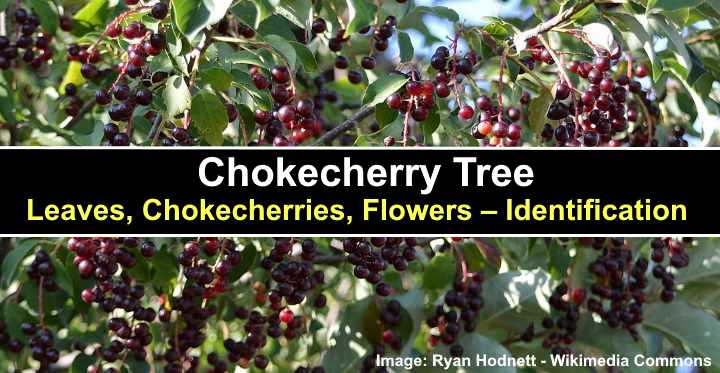
Chokecherry is a deciduous suckering shrub or small, bush-like tree with clusters of white spring flowers and astringent reddish-purple berry-like edible fruits. Chokecherry shrubs usually grow up to a maximum of 30 ft. (9 m) tall and have a rounded, irregularly shaped crown. Other identifiable features of chokecherry plants are relatively smooth gray bark, glossy green egg-shaped leaves, white spring flowers, and dark red or black summer fruits.
Sassafras Tree: Leaves, Flowers, Bark (Pictures) – Identification Guide
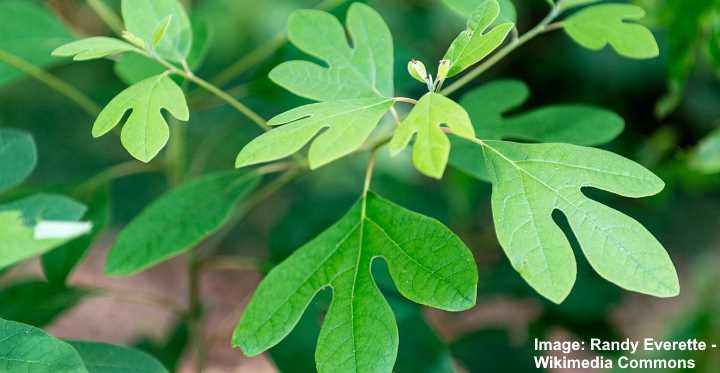
Sassafras is a group of deciduous trees with unusually lobed leaves, clusters of golden-yellow flowers, and dark blue berry-like drupes. Sassafras trees are also highly aromatic trees. In fall, when the foliage turns spectacular orange, scarlet, yellow, and purple colors, the leaves give off a strong fragrance. In the spring, the blossoms smell of root beer. Sassafras trees are relatively fast-growing trees, and the common Sassafras albidum matures at 30 to 60 ft. (9 – 18 m) tall and 25 to 40 ft. (7.6 – 12 m) wide.
Yew Trees: Types, Berries, Leaves (Pictures) – Identification
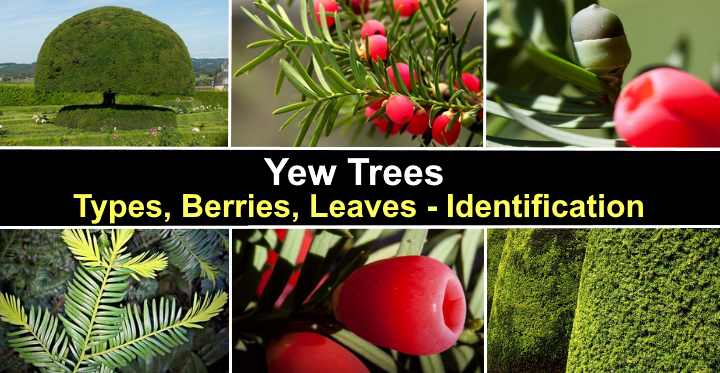
Yew trees are a group of coniferous trees with dark-green linear needle-like leaves, small red berry-like fruits, and small inconspicuous flowers. Yews are typically medium-sized evergreen trees. Yews are identified by their thin, scaly brown bark, tiny single-seed cones, red fruits, and linear flat leaves. The English yew (Taxus baccata) is the most common species. But Irish yew, Western yew, and Japanese yew are also ornamental conifer trees.
Mimosa Trees (Albizia Julibrissin): Facts, Flowers, Leaves (Pictures)
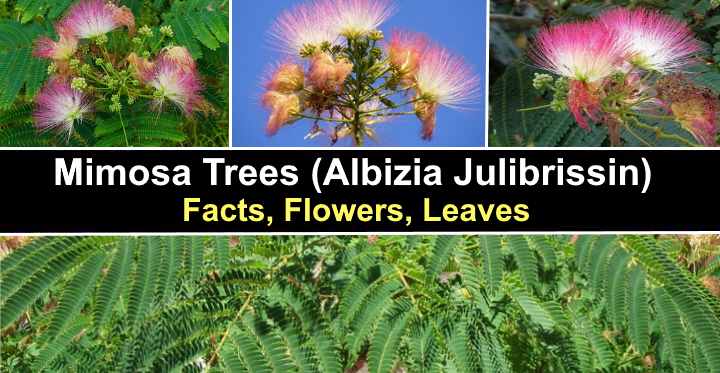
The mimosa tree is a fast-growing ornamental tree with silky white or pink pompom-like fluffy flowers, fern-like leaves, and brown flat, bean-like seed pods. Also called the Persian silk tree, the mimosa tree is easy to care for, tolerates drought, and thrives in the summer heat. However, mimosa trees grow quickly, and the small to medium-sized deciduous trees can become invasive outside their natural habitat.
Mulberry Trees: White, Red, Black – With Flowers and Leaves (Pictures)
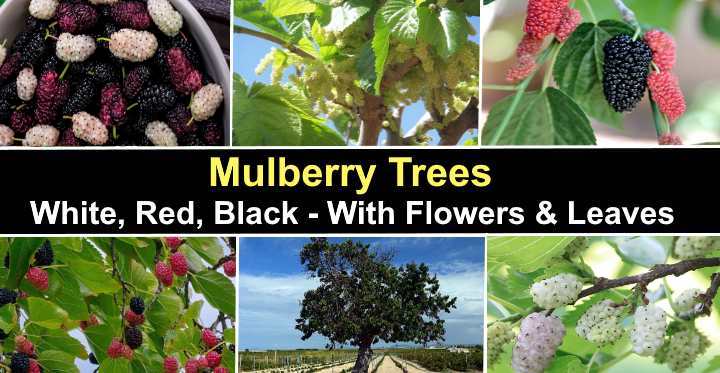
Mulberry trees (botanical name Morus) are popular ornamental shade trees that produce delicious edible white, red, or black berries. Commonly called mulberries, the medium-sized, berry-producing trees have attractive heart-shaped leaves, spikes of tiny white flowers (catkins), and thick grayish-brown bark. The common species of mulberry trees are red mulberry, white mulberry, and black mulberry.
Tree Fertilizers: When and How (Including The Best Tree Fertilizers)

Tree fertilizers are vital for providing fruit trees, evergreens, and deciduous trees with the nutrients they lack. The right type of fertilizer can help your trees grow larger, produce more fruit and foliage, and live longer. The best tree fertilizers ensure that trees in your garden continue to grow well and thrive for many years.
Hackberry Trees (Celtis): Common Types, Leaves, Bark, Fruit (Pictures) – Identification

Hackberry (Celtis) is a group of medium-sized, deciduous trees with long ovately-shaped leaves, clusters of small fuzzy spring flowers, and small purple fruits. Low-maintenance hackberry trees are hardy trees that withstand many conditions, including drought, wet soil, strong winds, and air pollution. The tree’s dense, spreading foliage and rounded crown make hackberries ideal shade trees or lawn trees in garden landscapes.
Sumac Trees: Types, Leaves, Berries (Pictures) – Identification and Planting Guide

Sumac (genus Rhus) is a group of flowering small trees and shrubs. Sumacs are identified by their fern-like pinnate leaves, conical clusters (panicles) of white or green flowers, and fuzzy red berries. In the fall, sumac trees and shrubs turn brilliant autumn shades of red, orange, or purple. Trees and shrubs in the genus Rhus grow between 3 and 33 ft. (1 – 10 m).
